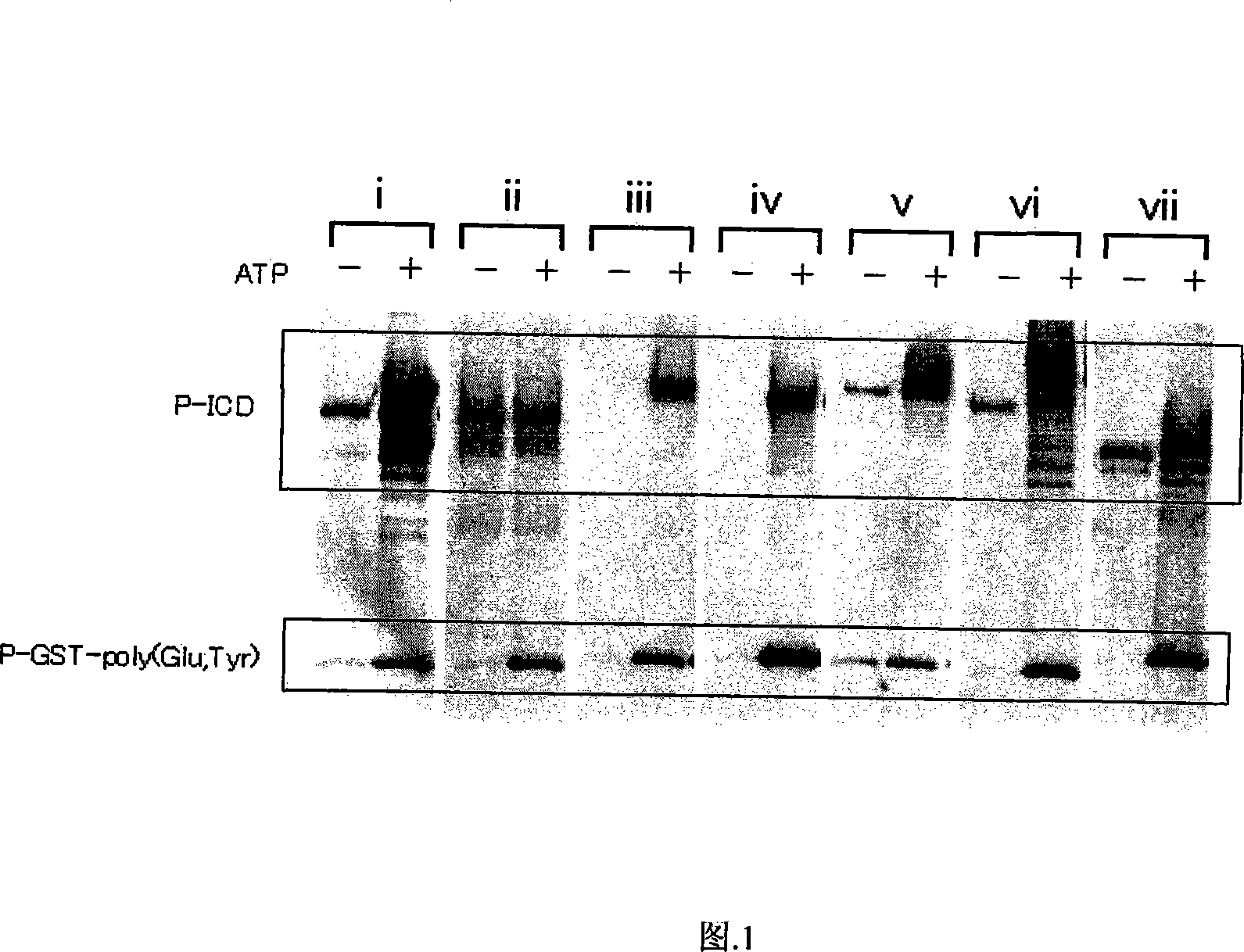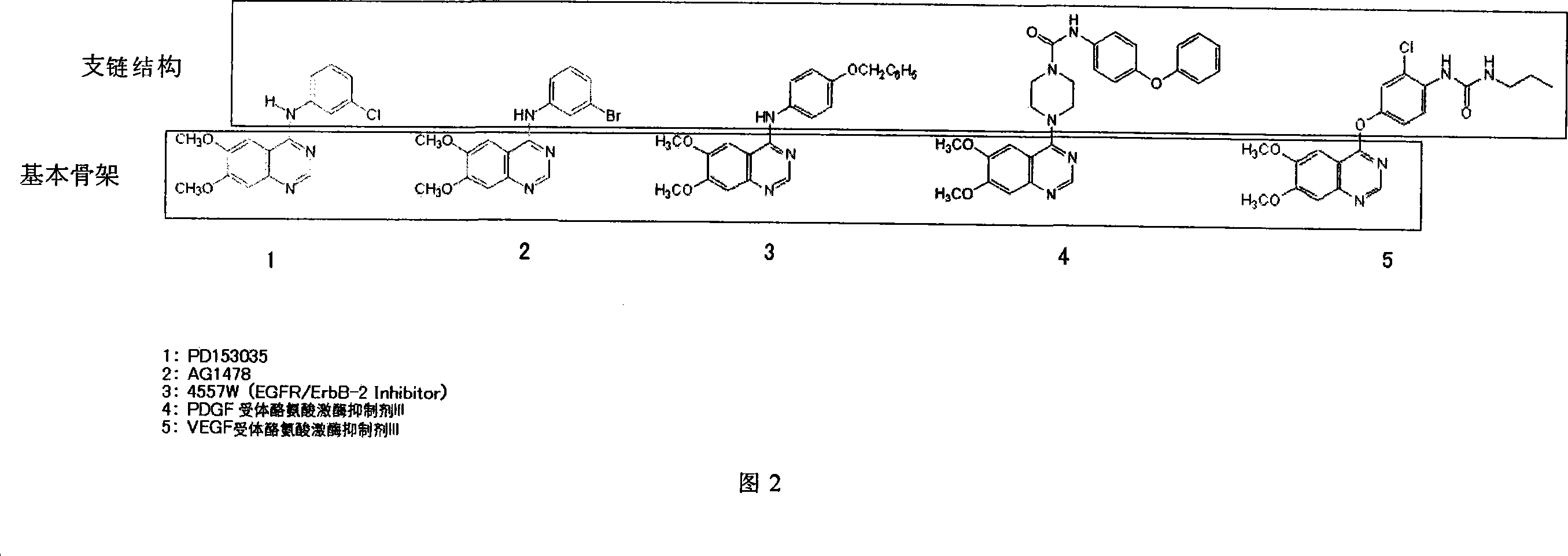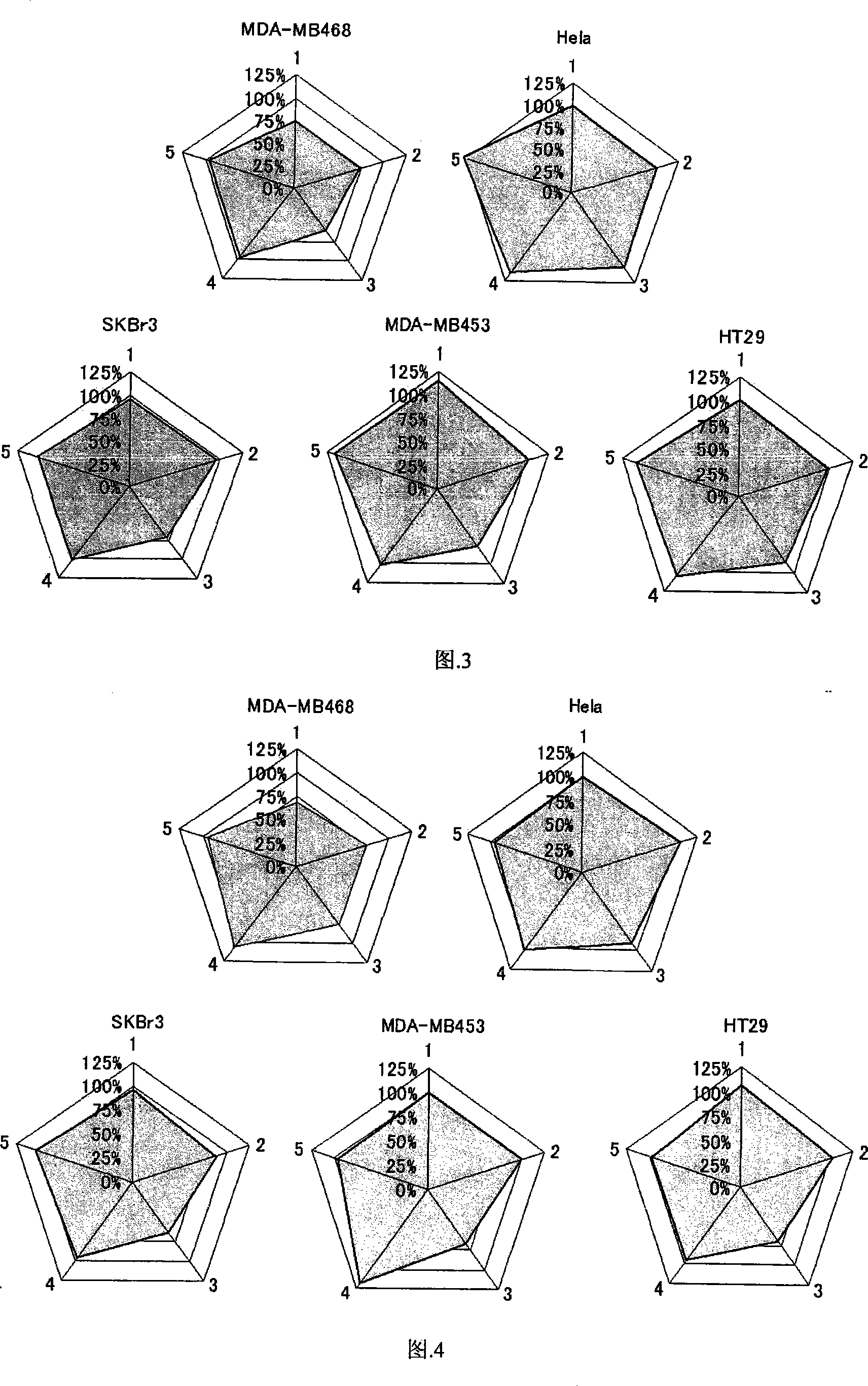Method for assessing proliferation inhibiting effect of inhibitor, and method for determining sensitivity of tumor cell to inhibitor
A tumor cell and proliferation inhibition technology, applied in the detection of programmed cell death, biochemical equipment and methods, screening of compounds, etc., can solve problems such as insufficient inhibition of tyrosine kinases
- Summary
- Abstract
- Description
- Claims
- Application Information
AI Technical Summary
Problems solved by technology
Method used
Image
Examples
preparation example Construction
[0139] (Preparation of reaction samples)
[0140] 50 μl buffer 1 (containing 20mM HEPES pH7.4, 10mM MnCl 2 , 1% NP40, 1mM DTT, 0.2% protease inhibitor (hereinafter referred to as PI), 10% glycerol, 200μM Na 3 VO 4 and 50 mM NaF) and 0.5 pmol of a commercially available receptor tyrosine kinase ICD were mixed, and the resulting mixture was used as a reaction sample for the following enzyme reactions. Here, used as ICD: platelet-derived growth factor-β receptor kinase (hereinafter referred to as PDGFR-β kinase), vascular endothelial cell growth factor receptor 1 kinase (hereinafter referred to as VEGFR1 kinase), vascular endothelial cell growth factor receptor 2 kinase (hereinafter referred to as VEGFR2 kinase), epidermal growth factor receptor 1 kinase (hereinafter referred to as HER1 kinase), epidermal growth factor receptor 2 kinase (hereinafter referred to as HER2 kinase), epidermal growth factor receptor 4 kinase (hereinafter referred to as HER4 kinase), insulin Growth f...
example 1
[0150] Effect of ATP Competitive Tyrosine Kinase Inhibitors
[0151] In this example, a reaction sample containing receptor tyrosine kinase was prepared from cultured cells. Prepared reactions are treated with ATP-competitive tyrosine kinase inhibitors. Furthermore, the activity of receptor tyrosine kinase contained in the treated reaction sample was measured using a GST-Poly (Glu, Tyr) substrate. According to the obtained activity value, the inhibitory effect of the inhibitor on the tyrosine kinase activity of the cultured cells was discussed.
[0152] (sample for reaction)
[0153] Samples for the reaction were prepared from five types of cultured cells (MDA-MB453, MDA-MB468, SKBr3, Hela, and HT29). Specifically, the cultured cells and 1ml cell treatment solution (containing 20mM HEPES pH7.4, 0.2% PI, 10% glycerol, 200μM Na 3 VO 4 and 50mM NaF) were mixed, and the cell membrane of the resulting mixture was destroyed under pressure with a pestle to prepare a cell solutio...
Embodiment 2
[0199] Effect of Combination of Two ATP Competitive Tyrosine Kinase Inhibitors
[0200] In this example, the reaction sample MB468 used in Example 1 was treated by combining two kinds of ATP-competitive tyrosine kinase inhibitors. The activity value of the receptor tyrosine kinase group contained in the treated reaction sample MB468 was measured using a GST-Poly (Glu, Tyr) substrate. According to the obtained activity values, the inhibitory effect of the combination of the two inhibitors on the tyrosine kinase activity of the cultured cells was discussed.
[0201] (sample for reaction)
[0202] Use the reaction sample MB468 that embodiment 1 prepares.
[0203] (ELISA plate)
[0204] The following enzymatic reactions were carried out using the chromatography plate for ELISA prepared in Example 1.
[0205] (ATP Competitive Tyrosine Kinase Inhibitor Treatment)
[0206] In this example, four ATP-competitive tyrosine kinase inhibitors AG1478, 4557W, PDGF receptor tyrosine kina...
PUM
 Login to View More
Login to View More Abstract
Description
Claims
Application Information
 Login to View More
Login to View More - R&D
- Intellectual Property
- Life Sciences
- Materials
- Tech Scout
- Unparalleled Data Quality
- Higher Quality Content
- 60% Fewer Hallucinations
Browse by: Latest US Patents, China's latest patents, Technical Efficacy Thesaurus, Application Domain, Technology Topic, Popular Technical Reports.
© 2025 PatSnap. All rights reserved.Legal|Privacy policy|Modern Slavery Act Transparency Statement|Sitemap|About US| Contact US: help@patsnap.com



